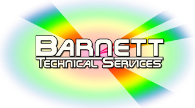Isolation and Characterization of Microplastics

Microplastics contaminate marine, freshwater and terrestrial ecosystems around the world. The growing prevalence of these contaminants requires study on their impact on human health and ways in which they can be identified and remediated.
Barnett Technical Services (BTS) has participated in a study set up by the State of California to assess methods for counting and characterizing micro plastic particles in water. This summary illustrates some of the methods BTS used in this study.
